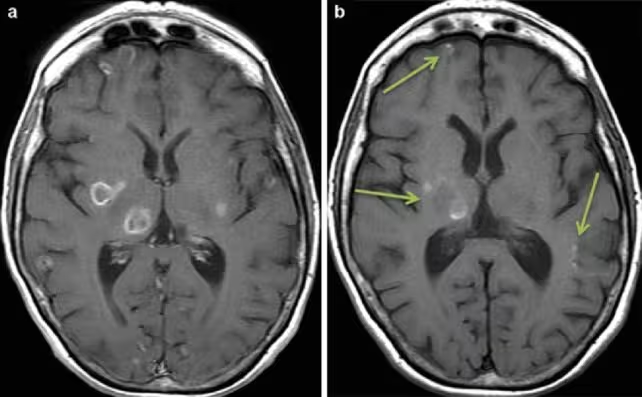4 Minutes
Understanding the Impact of Toxoplasma gondii on Brain Health
Toxoplasma gondii, a microscopic parasite commonly associated with cats, has long been the focus of scientific investigation due to its ability to infect a vast range of warm-blooded animals—including humans. Recent research has deepened our understanding of how this parasite can compromise brain function, even when only a modest number of neurons are affected.
Toxoplasmosis, the medical term for infection with T. gondii, is pervasive worldwide. While the majority of infected individuals remain asymptomatic, the parasite’s subtle effects on neural communication continue to draw scientific scrutiny. Notably, the implications may extend to behavioral changes and neurological disorders, raising concerns for public health and neurobiology alike.
Scientific Context: Toxoplasma gondii's Journey into the Brain
T. gondii is a protozoan parasite that primarily reproduces in cats but can infect nearly all warm-blooded species. It enters the body through oral ingestion, often via undercooked meat or exposure to feline feces. Once inside, T. gondii displays a remarkable ability to cross the blood-brain barrier and establish long-term presence within neurons—cells responsible for transmitting information throughout the nervous system.
What makes T. gondii particularly concerning is its apparent capacity to influence host behavior. While some animal studies suggest that infection can alter risk-taking and response to predator cues (notably causing rodents to lose their aversion to cats), direct evidence of similar behavioral manipulation in humans remains limited and controversial.
Breakthrough Findings: Disrupted Neuronal Communication Explained
A new study led by researchers at the University of California, Riverside, has provided significant insights into the physical effects of T. gondii infection on neuronal signaling. Instead of focusing on behavior, the study analyzed the direct consequences of the parasite’s presence within cultured mouse brain cells, as well as cells obtained from live animals.
The research revealed that neurons harboring T. gondii released substantially fewer extracellular vesicles (EVs) compared to healthy cells. EVs are tiny, membrane-bound structures that shuttle proteins, genetic material, and chemical messengers between neurons and glial cells (like astrocytes), facilitating complex brain communication.
"We found this disruption in EV signaling can interfere with how neurons and glial cells, especially astrocytes, maintain a healthy brain environment," explained Dr. Emma Wilson, a leading parasite immunologist involved in the research. She emphasized that even a small number of infected neurons could tip the intricate neurochemical balance that supports normal brain function: "Communication between neurons and supporting glial cells is not only critical, but also vulnerable to hijacking by parasites."

The Cascade Effect: Impaired Brain Health and Potential Risks
Further analysis showed not only a reduction in EV quantity, but also qualitative changes in their contents. These alterations disrupted how astrocytes—a type of glial cell crucial for maintaining brain health—expressed their genes. Notably, infected brains produced higher levels of immune-related molecules and lower amounts of a transporter protein responsible for clearing excess glutamate, a neurotransmitter, from the brain.
Elevated glutamate is linked to heightened risk of seizures, neural damage, and cognitive impairments—symptoms already observed in severe cases of toxoplasmosis. The findings suggest that previous estimates of T. gondii’s impact on brain health may have underestimated its significance. "The parasite may play a larger role in neurological and behavioral conditions than previously thought," Dr. Wilson noted.
Widespread Prevalence and Prevention Recommendations
T. gondii infection is alarmingly widespread, with global prevalence rates ranging from 10% to as high as 80% in some regions. In the United States, recent estimates suggest that between 10% and 30% of people may carry the parasite. Most individuals remain unaware of their infection status and live without notable symptoms. However, the risk escalates for vulnerable groups, including infants, the elderly, pregnant women, and those with weakened immune systems.
To reduce the risk of toxoplasmosis, experts recommend thoroughly cooking meat, washing fruits and vegetables, and practicing meticulous hygiene after handling cat litter. Continued research into T. gondii’s mechanisms and immune evasion may pave the way for innovative strategies to mitigate infection-related neurological risks.
"Our brains have built-in defenses that may recognize and respond to neurons infected by T. gondii," Dr. Wilson stated. "If we can learn how to support or enhance that process, we may be able to better protect people, especially the most vulnerable."
Conclusion
Research into Toxoplasma gondii sheds new light on how even low-level infections can subtly undermine brain communication and health. While the parasite often goes unnoticed, its potential to disrupt neural networks highlights the critical importance of food safety, public health awareness, and ongoing neuroscientific investigation. As our understanding of T. gondii deepens, so too does the potential for developing targeted interventions that safeguard the neurological well-being of millions worldwide.
Source: doi



Comments